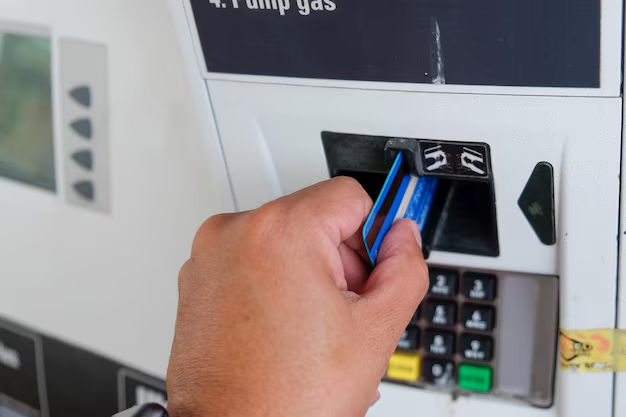**This article was generated with the assistance of AI. While efforts are made to provide accurate and helpful information, occasional errors or omissions may occur.
Understanding ATM Withdrawal Limits: Maximizing Access to Your Money
In today's fast-paced world, having immediate access to your money is crucial. Automated Teller Machines (ATMs) serve as one of the most convenient methods for withdrawing cash, but there are often limits to how much you can withdraw at once. Understanding these ATM withdrawal limits is essential for effective financial planning, especially during emergencies or while traveling. Let's delve into everything you need to know about ATM withdrawal limits, how they work, and how to make the most out of them.
What are ATM Withdrawal Limits?
ATM withdrawal limits refer to the maximum amount of cash you can withdraw from an ATM in a single transaction or within a 24-hour period. These limits vary depending on the bank or financial institution, the type of account you have, and even the specific ATM network used.
Why Do Banks Set Withdrawal Limits?
Withdrawal limits are primarily a security measure. By capping the amount of cash dispensed, banks aim to reduce the risk associated with stolen or lost debit cards. Here’s why these limits are important:
- Fraud Prevention: Reduces potential financial loss in case of theft or unauthorized access.
- Cash Flow Management: Ensures ATMs can serve multiple customers, maintaining enough cash for daily operations.
- Network Reliability: Limits excessive withdrawals that might burden ATM networks and cause outages.
Standard ATM Withdrawal Limits
While these limits can vary greatly, understanding some typical amounts can help set your expectations. Here is what you might commonly encounter:
- Major Banks: Typically allow between $300 to $1,000 per day.
- Credit Unions: Often have lower limits, usually ranging from $300 to $500.
- Online Banks: May offer higher withdrawal limits due to fewer physical branch overheads.
Remember, these figures are generalized; your specific limit may differ based on your account type or whether you've made request adjustments.
Factors Influencing ATM Withdrawal Limits
Several factors can affect your ATM withdrawal limits. Here are the most common elements:
- Account Type: Checking accounts often have higher limits than savings accounts.
- Customer Relationship: Loyalty or premium banking customers might enjoy elevated limits.
- Bank Policies: Vary according to individual bank strategies and risk assessments.
Increasing Your ATM Withdrawal Limits
If you find that your current ATM withdrawal limit is too restrictive, there are multiple ways you can increase it:
Contact Your Bank: Directly requesting an increase is straightforward. Banks may temporarily or permanently raise your limit based on your history and needs.
Upgrade Your Account: Some banks offer accounts with higher limits to customers who maintain a minimum balance or who are part of premium banking services.
Use Mobile Banking Apps: Many banks let you adjust limits through their mobile or online banking platforms for convenience.
Personal Visits: When exceeding daily limits is necessary (such as for emergencies), visit your local branch. They may arrange special one-time dispensation.
Managing Withdrawal Limits Efficiently
Knowing how to work within or around ATM withdrawal limits can be incredibly useful:
- Plan Ahead: Anticipate larger cash needs and stagger withdrawals to adhere to your limits.
- Multiple Accounts: Use different accounts or ATM cards to spread withdrawals if limits are restrictive.
- Alternative Cash Methods: Consider cashback options during point-of-sale purchases or visit bank branches for larger amounts.
Alternatives to ATM Withdrawals
Sometimes, you might not need cash at all. With the rise of digital banking solutions, consider these alternatives:
- Mobile Wallets and Payments: Services like Apple Pay or Google Wallet can handle transactions seamlessly without cash.
- Peer-to-Peer Payments: Use services like Venmo, PayPal, or Zelle for direct person-to-person transfers.
- Bank Drafts or Checks: Suitable for more significant transactions where credit cards or digital transfers aren't practical.
Consumer Tips: Navigating ATM Withdrawal Limits
Here's a handy summary to help manage your ATM withdrawal limits effectively:
- 💡 Know Your Limits: Always be aware of your current withdrawal cap to prevent transaction declines.
- 🏦 Talk to Your Bank: Reach out if limits are too constraining—banks often accommodate reasonable requests.
- 📱 Use Technology: Employ banking apps to monitor and adjust limits as needed for active control over finances.
- 🔄 Spread Withdrawals: Use multiple cards/accounts or plan transactions across several days.
- 💳 Explore Alternatives: Leverage digital wallets or P2P services to minimize cash dependency.
Key Takeaway: Be Proactive and Informed
Understanding ATM withdrawal limits and how they impact your access to cash can prevent inconvenience and build financial stability. Prioritize staying informed about your specific limits, exploring solutions to increase them if necessary, and employing strategic financial planning to ensure access to funds when you need them the most.
In Conclusion, ATM withdrawal limits are an integral part of modern banking, designed for security and operational efficiency. By understanding and managing these limits effectively, consumers can maintain seamless access to their finances while utilizing alternatives that cater to their current lifestyle and spending needs. Stay proactive, communicate with your bank, and leverage technology for optimal financial health.

Related Topics
- ACH Transfer Vs Wire Transfer
- Bank Account Bonuses 2025
- Bank Interest Rates Explained
- Banking For Small Businesses
- Best CDs 12 Month
- Best Checking Accounts For Students
- Best Money Market Accounts
- Best Online Banks
- Best Savings Accounts For Kids
- Cashier’s Check Vs Certified Check
- CD Ladder Pros And Cons
- Certificates Of Deposit Explained
- Credit Union Vs Bank
- FDIC Insurance Explained
- How Long Do Bank Transfers Take